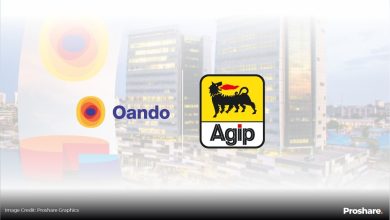Seplat Plc H1 2021 Results: A Rebound Troubled by Rising Debt

Nigeria’s largest oil company by market value, Seplat Energy Plc (Formerly, Seplat Petroleum Development Company Plc) half-year (H1) 2021 unaudited result showed a strong rebound in both top-line, and bottom-line earnings between H1 2020 and H1 2021 despite a lingering COVID-19 pandemic.
With oil production at about 30,000 b/d, gas production at 120 MMscfd, and average oil price realised at $64.69 per barrel (compared with $35.94/b in 2020) in H1 2021, the company’s total revenue in H1 2021 increased by +50.36% Y-o-Y to N120.44bn in H1 2021 from N80.11bn in H1 2020. In dollar-denominated, revenue grew slower by +32.3% Y-o-Y from $233.5m in H1 2020 to $308.8m in H1 2021.
Growth in the company’s operations was more pronounced in the bottom-line earnings. For instance, the company’s profit before tax (PBT) expressed in dollar terms grew by +57.27% Y-o-Y to $62.09m in H1 2021 from a loss of $145.33m in H1 2020. When valued in naira, the PBT grew more significantly by +148.61% Y-o-Y to N24.23bn in H1 2021 due mainly to the depreciation of the naira against the dollar.
Key Highlights
- Seplat’s total revenue increased by +50.36% Y-o-Y from
N80.11bn in H1 2020 toN120.44bn in H1 2021. - The company’s cost of sales (COS) increased by +27.65% Y-on-Y from
N67.19bn in H1 2020 toN85.76bn in H1 2021. - Gross profit increased by +168.48% Y-o-Y to
N34.68bn in H1 2021 fromN12.92bn in H1 2020, mainly driven by an increase in revenue. - Finance income fell by -99.33% Y-o-Y from
N601m in H1 2020 toN4m in H1 2021. - Finance cost increased by +47.73% Y-o-Y from
N12.54bn in H1 2020 toN18.52bn in H1 2021. - Operating profit increased significantly by +210.30% Y-o-Y from a loss of
N38.72bn in H1 2020 toN42.70bn in H1 2021. - Profit before tax increased by +148.61% Y-o-Y to
N24.23bn in H1 2021 from a loss ofN49.84bn in H1 2020. - Income tax grew significantly by +513.39% Y-o-Y from
N12.06bn tax credit in H1 2020 toN49.84bn tax expenses in H1 2021. - Profit after tax grew by +137.37% Y-o-Y to
N14.12bn in H1 2021 from a loss ofN37.78bn in H1 2020. - Total assets grew by +29.03% Y-o-Y from
N1,417.31bn in H1 2020 toN1,098.42bn in H1 2021. - Earnings per share increased by +177.50% Y-o-Y to
N37.86 in H1 2021.
Share Price & Volume Movement- The Upward Track
The company share price has been following an upward trend from the start of the year. The share price grew from N402 on January 4, when the market opened for the year’s trading sessions to N770 as at the close of business on July 30, 2021. It recorded a mild decline in January ending and early trading sessions in June. The progressive growth in the company’s share price can be attributable to the favourable disposition of investors to the strong rebound in the company’s earnings from 2020 figures.
The volume of Seplat’s shares traded since the beginning of the year attests to the strong appetites of investors in the company. The volumes traded started the year relatively low at over 6,000 on January 4th, 2021 but grew to as high as 95,000 in mid-February before declining in geometric progression to as low as 487 in April. Upon the release of the company’s Q1 2021 results, the rest of Q2 2021 (from May and beyond) saw the share volumes trading high, on the average of 220,000, with few periods of relatively lower volumes-late May and mid-June. Early signs of a strong rebound in Q2 performance have also continued to attract investors into the company
Profitability: In the Growth Process
Revenue
A breakdown of the company’s revenue showed that crude oil revenue grew by +54.59% Y-o-Y from N61.77bn in H1 2020 to N95.49bn in H1 2021 as the realised oil prices increased outweigh the decline in crude oil production. Specifically, realized oil prices increased by +79.99% Y-o-Y to US$64.69bpd in H1 2021 from US$35.94bpd in H1 2020 while liquid oil production decline by -11.99% Y-o-Y from 34,118 b/d in H1 2020 to 30,028 b/d in H1 2021. The company attributed the decline in crude oil production to structural issues in Q1 arising from its damaged MV Harcourt vessel last 2020.
Gas revenue increased by +36.09% Y-o-Y from N18.34bn in H1 2020 to N24.96bn in H1 2021 at an average price of $2.86/Mscf. The increase moved on higher gas sales volume, which increased by +20.56% Y-o-Y from 18Bscf in H1 2020 to 21.7BscF in H1 2021, indicating a gradual transition to gas as the company continues to bring new gas wells online.
Overall, the company gross revenue increased to an all-time high of N120.44bn, a sharp rebound from the pandemic-induced decline of H1 2020 (See chart 2).
Profit before Tax (PBT)
The company’s profit before tax also grew by +148.61% Y-o-Y to N24.23bn in H1 2021, a drastic recovery from the negative PBT recorded in the corresponding period of 2020 (See chart 3). On a quarter-on-quarter (Q-o-Q) basis, the PBT grew by +27.32% Q-o-Q from N10.65bn in Q1 2021 to N13.56bn in Q2 2021. The increase in PBT was driven by the significant growth in top-line earnings and the decline in administrative expenses Y-o-Y.
Asset Quality: Liquidity Targetting Paying off
Current Ratio
Seplat recorded a relatively higher current ratio of 1.59 in H1 2021, a marginal increase from the ratio of 1.52 recorded in H1 2020. H1 2021 current ratio of 1.59 implies the company held on to a relatively fair working capital position as its current asset was higher than its current liabilities. The company’s historical performance showed that it could meet analysts’ preferred current ratio of 2:1 (See chart 4).
Liquidity Ratio
The company’s liquidity has shrunk since the corresponding period of 2019 after reaching an all-time high of 20.69% in H1 2018. Its liquidity was 8.78%, a fall from 11.46% recorded in H1 2020, indicating that the company needs to manage its liquidity risk (See chart 5).
Acid-Test Ratio
Acid-Test Ratio is a stricter measure of the working capital position of a company factoring in inventory levels. Seplat’s acid test ratio increased from 1.36 in H1 2020 to 1.40 in H1 2021, suggesting a slight growth in the company’s inventory within the period (See chart 6). Compared with the analysts’ benchmark of 1:1, it strengthens the argument that the company has a proper working capital position.
Seplat’s leverage ratio at 45.57% in H1 2021 showed a -4.82% Y-o-Y drop from 47.88% in H1 2020 (See chart 7). The significant growth in the company’s debt-to-equity ratio from H1 2020 implied that debt financed almost 50% of the company’s assets. The high debt may raise concerns about the company’s profit in H2 2021 as finance costs rise.
Efficiency: More from Working Capital less from Asset
Working Capital Turnover
The working capital turnover ratio signifies how efficiently a company is generating sales using its working capital. Seplat’s working capital turnover ratio for H1 2021 shows an increase from 0.84 in H1 2020 to a record high of 1.69 in mid-year 2021. The high ratio implied that the company generated more revenue with its working capital. Analysts expect the company to maintain its current trajectory and generate higher revenue from lower working capital (See Chart 8 below).
Total Asset Turnover
Seplat’s total asset turnover, a measure of the company’s assets efficiency in generating sales/revenue, shows that the company has not achieved significant sales with its assets. Specifically, the H1 2021 total asset turnover ratio of 0.09 implies that the company generated 9kobo in sales for every N1 it incurred in assets within the period. The ratio has consistently fallen below expectations, averaging 0.09 from H1 2015 to H1 2021 (See Chart 9 below). The company may liquidate obsolete assets and manage its inventory level to strengthen the efficiency of its assets.
Periscope of the H2 2021
The change of name reflects Seplat Energy’s desire to lead Nigeria’s transition to lower-carbon and renewable energy. This explains why the company hopes to restructure its operations to generate more revenue from its gas operations. However, the completion of the ongoing ANOH Gas Processing Plant, which was initially slated for late 2021 but reviewed to H1 2022, continues to be the major project the company relies on to drive its transition to gas. Albeit analysts believe the company’s inability to grow its gross contribution to total revenue beyond 20-28% and its continuous expectation of producing an average of 48,000 – 55,000 boe/d may threaten its dream to lead Nigeria’s energy transition. In that instance, shareholders may need to step up their campaign for cleaner fuels in the company’s energy composition to ensure the sustainability and continued profitability of the company amidst the energy transition.
Given the optimistic benchmarks for the company’s operation in H2 2021 on the back of a global recovery in economic activities marked by rising oil demand and an increase in oil prices, the company must factor in a downside risk of the new delta variant of the COVID-19 if it intends to truly hedge against market volatility for the rest of the year.
Analysts have a keen interest in how Seplat will manage the unveiling opportunities from the divestment of International Oil Companies (IOCs) from the nation’s oil and gas industry and the opportunities presented by the recently passed Petroleum Industry Bill in H2 2021.






